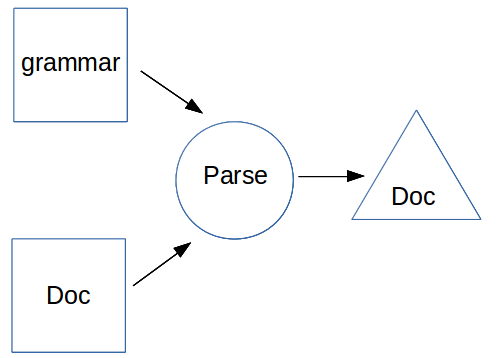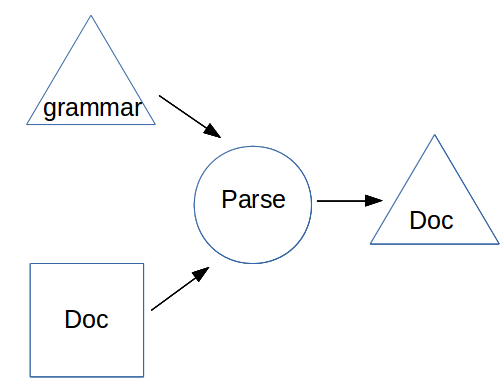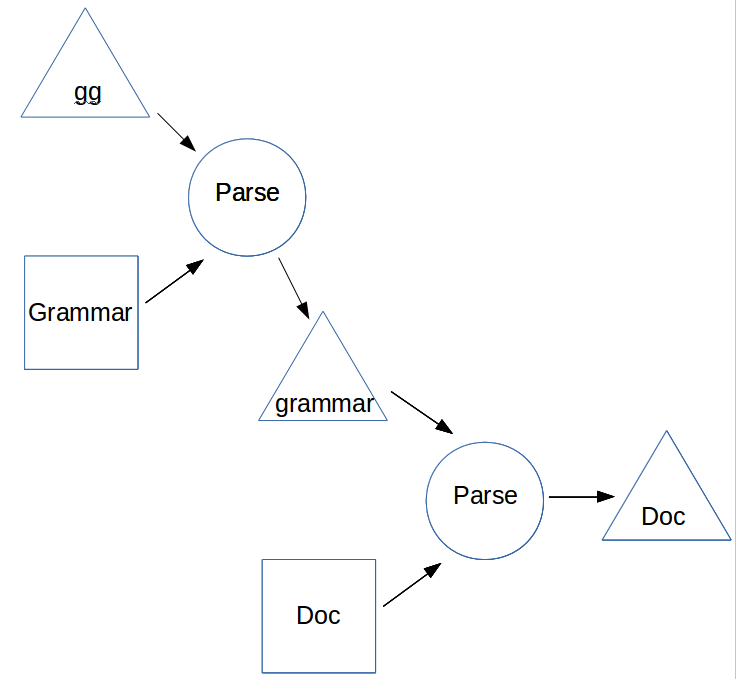
"This is clearly a submission that needs to be shredded, burned, and the ashes buried in multiple locations"
"I think the audience will eat him alive. But I want to be there to hear it."
Taking three as a number to reason about (a convenient number to state.)
3
The concept of "Three" is an abstraction: you can't point to "three", only three somethings.
Given the right context, these all represent the same number:
Which representations we choose depends on convenience, utility, familiarity, habit, context.
These are similarly equivalent:
{"temperature": {"scale": "C"; "value": 21}}
<temperature scale="C" value="21"/>
<temperature scale="C">21</temperature>
<temperature> <scale>C</scale> <value>21</value> </temperature>
As I said: "Which representations we choose depends on convenience, utility, familiarity, habit, context."
One utility of XML is its generic data pipeline.
How do we resolve the conflicting requirements of convenience, utility, familiarity, habit, and context, and still enable a generic toolchain?
Allows you to inject any parsable structured document into the XML pipeline, and treat it as XML.
It is based on the observation that, looked at in the right way, an XML document is no more than the parse tree of some external form.
a×(3+b)
You could represent this in XML as
<expr>
<prod>
<letter>a</letter>
<sum>
<digit>3</digit>
<letter>b</letter>
</sum>
</prod>
</expr>
Let's take a suitable grammar for expressions:
expr: term; sum; diff.
sum: expr, "+", term.
diff: expr, "-", term.
term: factor; prod; div.
prod: term, "×", factor.
div: term, "÷", factor.
factor: letter; digit; "(", expr, ")".
letter: ["a"-"z"].
digit: ["0"-"9"].
expr
|
term
|
prod
-----+------
| | |
term "×" factor
| |
factor ----+-----
| | | |
letter "(" expr ")"
| |
"a" sum
-----+----
| | |
expr "+" term
| |
term factor
| |
factor letter
| |
digit "b"
|
"3"
expr
| term
| | prod
| | | term
| | | | factor
| | | | | letter
| | | | | | "a"
| | | "×"
| | | factor
| | | | "("
| | | | expr
| | | | | sum
| | | | | | expr
| | | | | | | term
| | | | | | | | factor
| | | | | | | | | digit
| | | | | | | | | | "3"
| | | | | | "+"
| | | | | | term
| | | | | | | factor
| | | | | | | | letter
| | | | | | | | | "b"
| | | | ")"
<expr>
<term>
<prod>
<term>
<factor>
<letter>a</letter>
</factor>
</term>
×
<factor>
(
<expr>
<sum>
<expr>
<term>
<factor>
<digit>3</digit>
</factor>
</term>
</expr>
+
<term>
<factor>
<letter>b</letter>
</factor>
</term>
</sum>
</expr>
)
</factor>
</prod>
</term>
</expr>
expression: ^expr.
expr: term; ^sum; ^diff.
sum: expr, "+", term.
diff: expr, "-", term.
term: factor; ^prod; ^div.
prod: term, "×", factor.
div: term, "÷", factor.
factor: ^letter; ^digit; "(", expr, ")".
letter: ^["a"-"z"].
digit: ^["0"-"9"].
<expr>
<prod>
<letter>a</letter>
<sum>
<digit>3</digit>
<letter>b</letter>
</sum>
</prod>
</expr>
How to get back from the XML to the original format.
body {color: blue; font-weight: bold}
gives
<css>
<rule>
<selector>body</selector>
<block>
<property>
<name>color</name>
<value>blue</value>
</property>
<property>
<name>font-weight</name>
<value>bold</value>
</property>
</block>
</rule>
</css>
block::before {content: "{"}
block::after {content: "}"}
name::after {content: ":"}
property::after {content: ";"}
body {color: blue; font-weight: bold}
<css>
<rule>
<selector>body</selector>
<block>
<property name="color" value="blue"/>
<property name="font-weight" value="bold"/>
</block>
</rule>
</css>
block::before {content: "{"}
block::after {content:"}"}
property::before {content: attr(name) ":" attr(value) ";"}
Not possible, because of loss of context.
<expr>
<prod>
<letter>a</letter>
<sum>
<digit>3</digit>
<letter>b</letter>
</sum>
</prod>
</expr>
to
a×(3+b)
serialise(t)=
for node in children(t):
select:
terminal(node):
output(node)
nonterminal(node):
serialise(node)
Walk through the reduced parse tree, hand in hand with the original grammar, reconstructing the original parse tree.
This is actually parsing, but rather than parsing text, we are parsing the (reduced) parse tree.
<string>aaa</string>
"aaa" vs 'aaa'
a+(3+b) vs a+((3+b))
expression: ^expr.
expr: term; ^sum; ^diff.
sum: expr, "+", term.
diff: expr, "-", term.
term: factor; ^prod; ^div.
prod: term, "×", factor.
div: term, "÷", factor.
factor: ^letter; ^digit; "(", expr, ")".
letter: ^["a"-"z"].
digit: ^["0"-"9"].
to
expr: operand. sum: operand, operand. diff: operand, operand. prod: operand, operand. div: operand, operand. letter: ["a"-"z"]. digit: ["0"-"9"].
where
operand = (letter; digit; prod; div; sum; diff)



ixml: (^rule)+. rule: @name, colon, definition, stop. definition: (^alternative)+semicolon. alternative: (term)*comma. term: symbol; repetition. ... name: (letter)+. colon: ":".
vs
<ixml> ::= (^<rule>)+ <rule> ::= @<name> <define-symbol> <definition> <definition> ::= (^<alternative>)+<bar> <alternative> ::= (<term>)* <term> ::= <symbol> | <repetition> ... <name> ::= "<" (<letter>)+ ">"<define-symbol> ::= "::=" <bar> ::= "|"
These have the same condensed grammars.
What this means is that as long as the reduced grammars are identical, you can convert between formats, by reading with one grammar, and writing with the other.
This also works for subsets, where one of the reduced grammars is a true subset of the other.
In a sense ixml is an 'obvious' idea. But I suspect that it is obvious only once you have heard it.
I now know of four implementations. Please tell me if you implement it, and give me feedback!